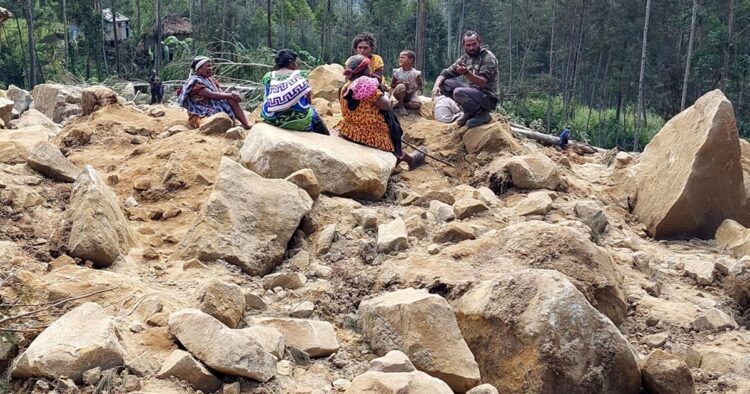A devastating landslide has struck the Enga region of Papua New Guinea, with reports indicating that around 2000 people may have been buried. The landslide hit the remote village of Kaokalam last Friday at about 3 am local time, leaving a trail of destruction equivalent to the size of four football fields.
The National Disaster Centre in Papua New Guinea reported the latest figures, showing a significant increase from earlier estimates. Initially, the United Nations had confirmed around 100 deaths. This number was later revised to 670 by the International Organisation for Migration. However, the latest estimates suggest a much grimmer reality.
Lusete Laso Mana, the Acting Director of the National Disaster Centre, detailed the severe impact of the landslide in a letter to the UN. He explained that the disaster not only buried thousands of people but also caused major damage to buildings, food gardens, and the economic infrastructure of the area.
ALSO READ: “Massive Landslide in Papua New Guinea Claims Over 670 Lives”
The ongoing shifting of the landslip has made the situation even more dangerous for both rescue teams and potential survivors.
The landslide has blocked the main highway to the affected area, making it difficult for rescuers to reach the site. Despite the challenging conditions, rescue teams are working tirelessly to find any survivors. However, the unstable terrain and continuous falling rocks pose extreme risks, complicating their efforts.
Over 150 houses in the village of Yambali were buried under the debris. The remote location and the mountainous terrain of Papua New Guinea, which is home to about 10 million people, have further hindered rescue operations. Access to the region is limited, with few roads available.
Experts have weighed in on the disaster. Pierre Rognon from the University of Sydney highlighted the difficulty of finding survivors in such conditions, noting that landslides can bury people under layers of debris and move structures over large distances. This makes it nearly impossible to predict where survivors might be.
While the exact cause of the landslide is unclear, Alan Collins from the University of Adelaide pointed out that the region experiences considerable rainfall. Frequent earthquakes in the area also contribute to unstable slopes and high mountains, which can easily give way.
Collins noted that heavy rainfall can weaken the bedrock, leading to landslides. He also emphasized that deforestation could worsen such disasters, as tree roots help stabilize the soil.
The current situation in Papua New Guinea remains critical, with ongoing dangers and a high risk of further landslides. The extensive damage calls for immediate and coordinated action from various organizations to aid in rescue efforts and support the affected communities.

















Comments